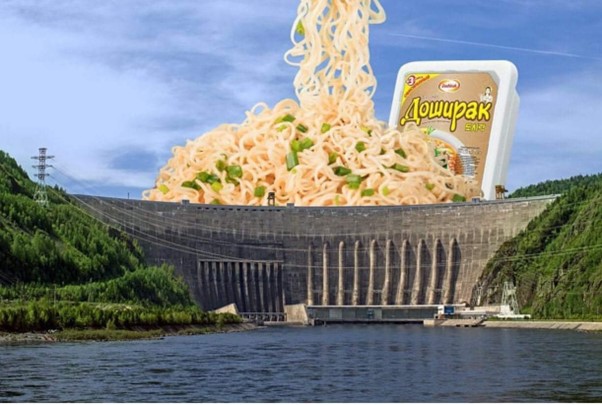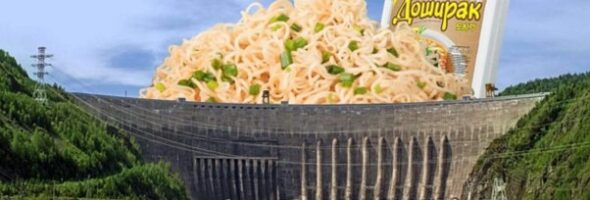
In March 2024 17 civil society groups sent an appeal to the World Bank and 10 more international banks and funds urging them to rethink approach to the Rogun Hydro in Tajikistan.
After 40 days of silence The World Bank issued a detailed response which, instead of answering specific questions asked by CSOs, reiterates questionable statements from the substandard “Update of Environmental and Social Impacts Assessment” for the Rogun HPP Project. It took the World Bank 65 days to answer another CSOs’ appeal related to potential biodiversity impacts from this megadam.
The World Bank is not even attempting to answer specific questions asked by CSOs, but rather refuting those by simply quoting the substandard “Update of the ESIA” prepared for Rogun HPP Project. The most vividly this comes up in the discussion about the “avoided CO2 emissions” in order to fulfill the Paris Agreement on climate.
Decarbonization: the CSOs argument.
Regarding “decarbonization” the CSOs wrote the following:
We consider the statement that “the Rogun HPP Project will significantly contribute to regional decarbonization in Central Asia” as inappropriate with no factual basis. The assumption appears to be that countries of the region will have to sign PPAs with Rogun Hydro and then wait for 10-15 years until Rogun HPP reservoir will be filled, satisfies domestic demand, and starts delivering sizeable volume of “green energy”. This is a very bad postponed scenario of decarbonization lagging with a very questionable economics as development of Rogun will cost far beyond USD 3000/kw installed capacity – several times more than other imaginable alternatives. Alternative decarbonization scenarios based on the current situation must be assessed as a part of this ESIA completion. So far, the ESIA relies on 2014 studies, which are by now completely irrelevant.”
In addition the CSOs repeatedly argued that even incomplete assessment of emissions from Rogun reservoir (in the draft 2023 ESIA) has suggested very high carbon intensity of 102 grams of CO2 equivalent/ KWhour , and the current mean intensity in Tajikistan energy system is 106 grams of CO2 equivalent/ KWhour . This means that development of the Rogun HPP will not reduce emissions from the country’s energy system.
The World Bank Response stressed the “Decarbonization value” of the Rogun HPP:
“One of the key benefits of Rogun HPP is the avoided CO2 emissions of alternative generation required to meet electricity demand in the absence of Rogun HPP. The project will contribute to regional energy security and enable the expansion of exports of clean electricity to the broader region, which currently still largely depends on gas and coal-fired generation. Rogun HPP would contribute to a reduction in CO2 emissions in the CA region through avoided emissions from fossil fuel generation in these countries.”
“The statement concerning Rogun’s potential to contribute to regional decarbonization in Central Asia is based on detailed power system models, which were developed for Tajikistan and for the Central Asia region (the WB provides no reference to up-to-date models here of in the whole 2023 ESIA).
“One of the key benefits of Rogun HPP is the avoided cost (and associated CO2 emissions) of alternative generation required to meet electricity demand in the absence of Rogun HPP. Without the Project, between 2024-2050, Tajikistan would need to construct a new 250 MW gas-fired thermal combined cycle gas turbine plant (CCGT), 2,900 MW of solar PV, and 600 MW of wind projects to replace electricity generation from the Rogun HPP.” (To start with, the construction cost of this WB-conceived “alternative” is two-three times lower than for the completion of the Rogun HPP, which was assessed as USD 6.4 billion in February 2024. The “alternative” could be developed 3-5 times quicker, which is an important consideration given regular blackouts in Tajik energy system. As for carbon emissions, from the “alternative” they would be comparable or lower than those from the completion and operation of the Rogun dam. Many other alternatives are readily available but have not been considered and assessed by the WB-sponsored 2023 ESIA. As a matter of fact, this “alternative” is also absent there.)
“Avoided CO2 emissions are increased further as the result of avoided alternative generation in the sub-region (e.g., for the period 2023-2050, 20 mt/CO2 in Kazakhstan, and 12 mt/CO2 in Uzbekistan). Those comprise reduction of fossil fuel generation in countries that are expected to import electricity from the Project (Central Asian countries) and avoided emissions from the domestic power system. In addition, … it would provide additional services (e.g., reserves and balancing) to the broader Central Asia Power System at competitive prices, thus enabling the maintenance of affordable electricity tariffs for consumers in the CA region and beyond.” (No credible calculations presented by the WB to support those slogans. In reality, Kazakhstan and Uzbekistan just declared extensive plans for construction of fossil fuel-based generation in next 5 years (some of those with loans from MDBs) and excuses of getting “clean energy of Rogun” in remote future are cementing their strategy. As for the cost of Rogun electricity being “competitive” – that definitely needs to be proved by up-to-date modelling, because so far Rogun construction costs per kilowatt are at least 5 times more expensive than those for solar power plants.)
“Finally, it should be noted that Rogun HPP is already generating electricity and exports are expected to start as soon as Power Purchase Agreements (PPAs) are signed (term sheets for the PPAs have already been signed with Uzbekistan and Kazakhstan, and full PPAs expected to be signed in 2024) meaning the benefits described above would accrue from 2024 and steadily increase over time (rather than needing to wait 10-15 years)”. Here the World Bank intentionally spreads inaccurate information. Current capacity of Rogun HPP is around 400 MW, which does not really make much difference even for the Tajikistan’s 8 GW energy system. Signing the PPAs with Kazakhstan and Uzbekistan does not produce energy, therefore “steady increase” will take 10-15 years to bring palpable results for the region, while any credible up to date estimates of electricity production and cost during construction and reservoir filling period are absent from the WB documents. Meanwhile further delays in construction and reservoir filling are very very likely, given the history of the project and trends in hydropower industry.)
Therefore, the World Bank defending the Rogun HPP Project, so far has failed to present credible evidence that:
- Completing the “tallest megadam in the world” is the best among possible alternatives for decarbonizing the Central Asia.
- Project will guarantee timely alternatives to development of new fossil-fuel generation rather than serve as a smokescreen for such development.
- Electricity produced from the megadam will be competitive compared with possible alternatives.
- The megadam and its electricity will be affordable for poor local consumers and will not result in increased costs of living for Tajik and Central Asian local communities, while delaying by a decade their access to clean electricity.
This exchange between the World Bank and CSOs shows a very dangerous trend in which the multilateral development banks avoid accountability and invest in inefficient megaprojects shielding themselves by their common “Paris Alignment” strategy and heaps of unverifiable slogans.


